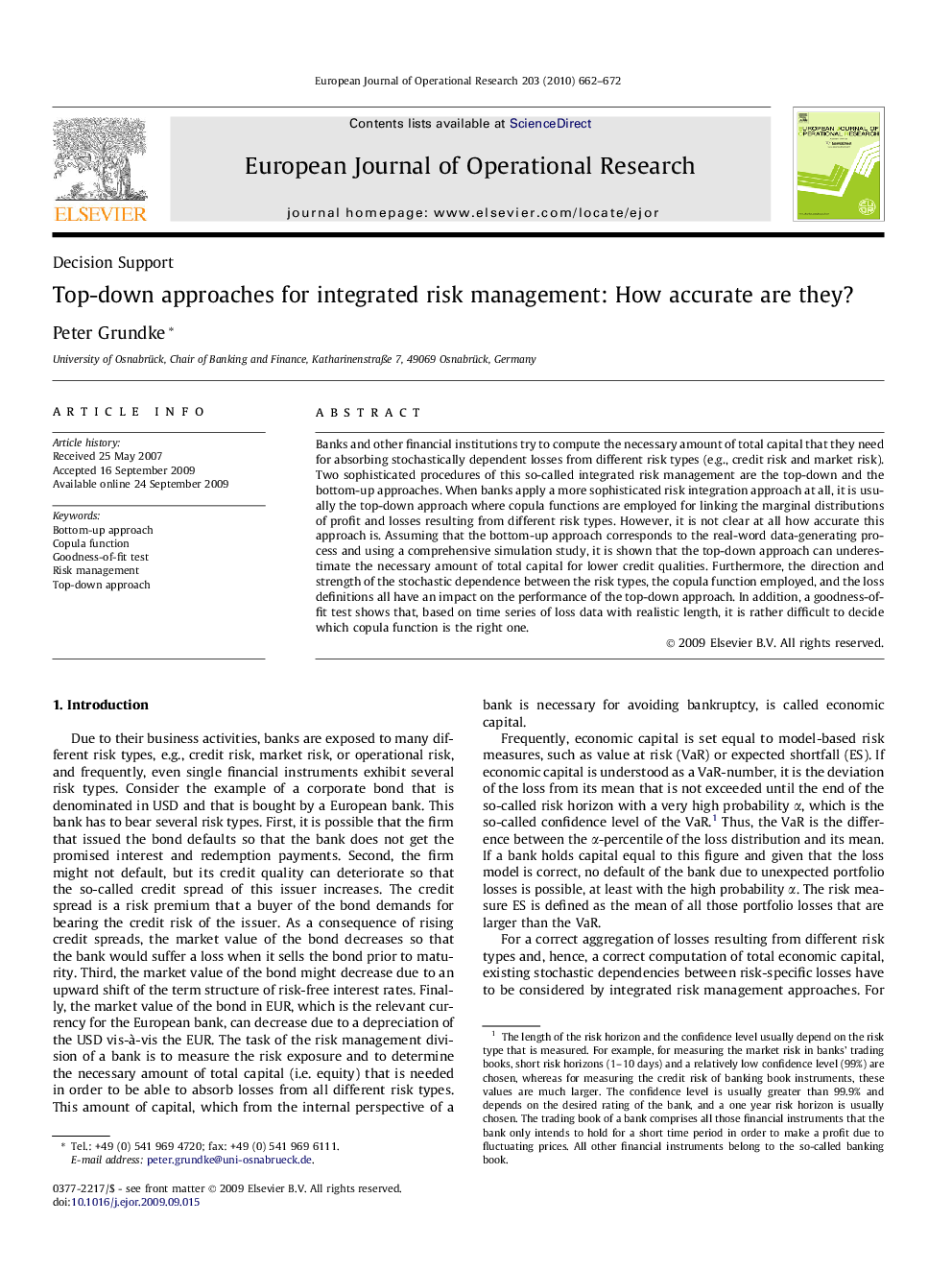| Article ID | Journal | Published Year | Pages | File Type |
|---|---|---|---|---|
| 478687 | European Journal of Operational Research | 2010 | 11 Pages |
Banks and other financial institutions try to compute the necessary amount of total capital that they need for absorbing stochastically dependent losses from different risk types (e.g., credit risk and market risk). Two sophisticated procedures of this so-called integrated risk management are the top-down and the bottom-up approaches. When banks apply a more sophisticated risk integration approach at all, it is usually the top-down approach where copula functions are employed for linking the marginal distributions of profit and losses resulting from different risk types. However, it is not clear at all how accurate this approach is. Assuming that the bottom-up approach corresponds to the real-word data-generating process and using a comprehensive simulation study, it is shown that the top-down approach can underestimate the necessary amount of total capital for lower credit qualities. Furthermore, the direction and strength of the stochastic dependence between the risk types, the copula function employed, and the loss definitions all have an impact on the performance of the top-down approach. In addition, a goodness-of-fit test shows that, based on time series of loss data with realistic length, it is rather difficult to decide which copula function is the right one.
